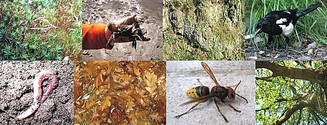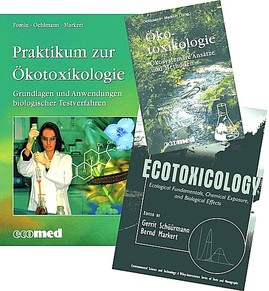Pollution Control by Use of Bioindicators/Biomonitors
Biotest - Biological and Ecotoxicological Implications
With physicochemical parameters such as pH, concentrations of certain (other) compounds, UV luminosity being measured in some environmental compartment, biological and ecotoxicological implications which are and describe drawbacks of chemical changes for living beings or entire ecosystems, can only (at best) be inferred in an indirect way.
This takes an extrapolation from what is known about optimal or marginal (respectively) living and reproduction conditions in terms of chemical effects thereon of certain species to the ecosystems metalevel. Of course, results thus obtained may be more or less clear or ambiguous; cp. the discussion on reasons of forest dieback and possible causal chains involved which wenton for more than twenty years.
The reasoning which prompts and makes one design some biotest is quite different, so to say, turn this approach upside down: some (group of, for statistical reasons) test organism(s) is/are brought to a polluted environmental site or get into contact with some sample taken therefrom (e.g. exposing fishes, snails or zooplankton crustaceans like Daphnia magna to sediment samples) in order to evaluate phasiological changes caused by this exposition, usually done over defined periods of time (say, 48 hours or 30 days).
Among the range of corresponding effects there are
- rate (percentage) of test organisms to die within the given period of exposition time
- reproductional toxicity, including all budding rates of bacteria, sterility of metazoans, egg dieoff, embryo or hatchling deformations, miscarriage rates, and deformations of genitalia caused by endocrinic activities of some compounds
- in animals, changes of behavior (reaction time lags, aggression, speed of swimming, coordination in tricky environments, like when balancing on some pole, changes of preferring dark or bright surroundings, reduced capability to cope with labyrinths or other difficult-to-grasp environments, etc.)
- changes of skin color (bleaching, pathological pigmentation, short-term effects in animals which – like many fishes, cephalopods – use skin color or pigment pattern changes as signals), damages inflicted on certain surface organs (leaf interface, skin), including tumorogenesis
- production of “marker” compounds for chemical stress including induction of enzymes and protecting agents like metallothionein or ethoxyresorufin-O-deethylase (EROD*), an enzyme from fish liver cells which is induced by addition of pollutants like dioxines.
*EROD induction has the peculiar advantage for detection of chemical stress of hardly being suppressed itself by action of xenobiotic compounds (Whyte et al. 2000). Accordingly, EROD test sensitivity surpasses that of most toxicological standard test procedures.
Fränzle S, Markert B, Wünschmann S (2012)
Introduction to Environmental Engineering.
Wiley-VCH
More detailed information on the field of ecotoxicology you can find in:
Schüürmann G, Markert B, eds. (1998) Ecotoxicology
Fomin A, Oehlmann J, Markert B (2003) Praktikum zur Ökotoxikologie (German language)
Oehlmann J, Markert B (Hrsg.) (1999) Ökotoxikologie (German language)










